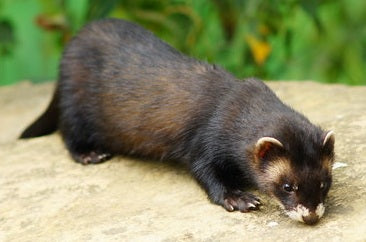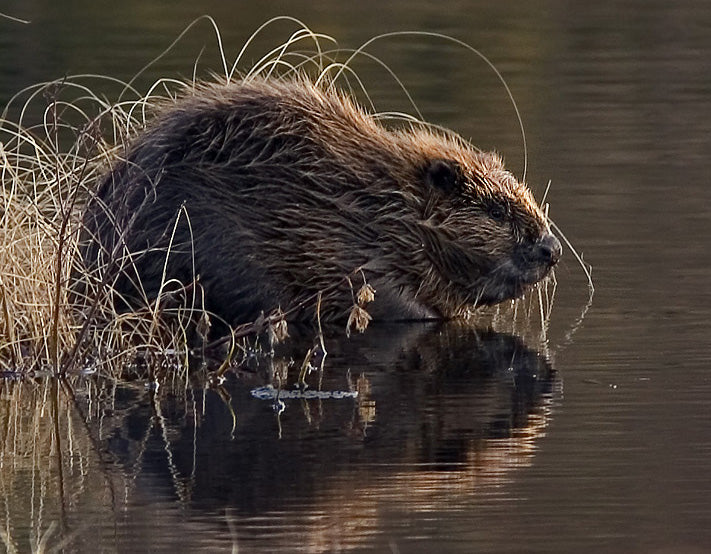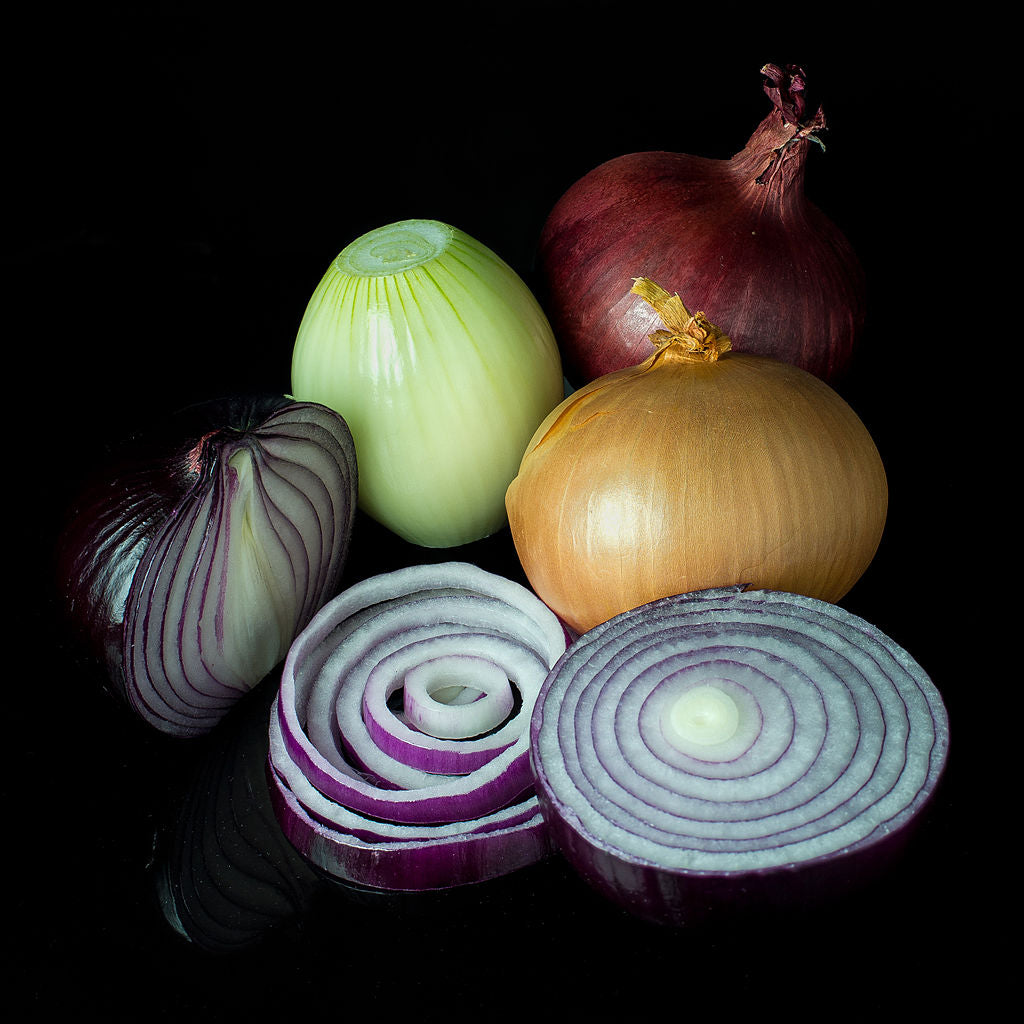
A Guide To British Fauna - The European Polecat
Scientific Name : Mustela putorius
Common Names : European Polecat, Common Ferret, Black Polecat, Forest Polecat, Fitch
Physical appearance : The European Polecat is a member of the Mustela genus, similar to mink and weasel but slightly smaller in size, with a more powerfully built skull and and jaw. It is also somewhat less agile than its relatives. The European Polecat has the ability to secrete a particularly acrid smelling liquid which it uses to mark its territory or to discourage potential attackers. The Polecat is a direct descendant of the ferret and can cross breed with it to produce fertile young. Although similar in appearance, the Polecat can be distinguished from the ferret by its smaller, shorter stature and the black "eye mask" colouring around its eyes.

Occasionaly, a polecat may exhibit some albino or reddish colouring via a relatively common gene mutation. One of the reasons it is difficult to distinguish them from ferrets.
Where to find/natural habitat : Common throughout Europe and Northern Africa. The European Polecat has a fairly wide range of habitats and will generally be found in grasslands, wetlands, farmland, rural buildings, riverbanks and woodlands.
Habits and charecteristics : Preferring to hunt at night, the Polecat is largely nocturnal. It tracks and stalks its prey before finally pouncing and delivering a fatal bite, generally to the head and neck. Occasionally, the Polecat will cripple its prey with a bite to the brain. Disturbingly, it may take its crippled, still living prey back to its burrow and eat it at a more convenient time. Polecats are good swimmers.
A Polecat wil hunt rabbits, frogs, mice, birds, eggs and reptiles. It has an accute sense of hearing which it uses to hunt down its prey.
Breeding and birth : The Polecat is less territorial than its relatives such as the weasel and mink. Infact, Polecats of the same sex can simultaneously occupy the same territory without confrontation. However, territorial disputes may arise when resources become scarce.
The Polecat is polygamous although pregnancy occurs directly after mating, with no induced ovulation. The mother will generally give birth in early summer, to litters of up to 10 kits, which wil become independent of their parents at two to three months of age. In the case of litter loss, the female can produce a second litter, provided its not too late in the breeding season. As mentioned, kits will follow their parents around and outside their burrows and will learn hunting and life skills, during this period.

Photo:Peter Trimming, CC BY-SA 2.0 <https://creativecommons.org/licenses/by-sa/2.0>, via Wikimedia Commons
Predation : In the UK, the Polecat does not have very many predators. They may be occasionally killed by dogs (though not necessarily due to hunting), as well as some larger owl species. In other parts of the world, coyotes and bobcats can also be considered as Polecat predators.

(Pictured above - Two women hunting for rabbits with a Polecat. Illustration taken from The Queen Mary Psalter.)
Protection status : It is illegal to kill, harm or injure a Polecat in the UK. This protection arises from the WIldlife and Countryside Act 1981. As a result, the borderline extinction of the Polecat in the UK has been reversed (since 1950s) and is now deemed a stable, non threatened species within the UK.
"Leave nothing but footprints, take nothing but pictures/memories."
Images courtesy of Alexis de la Serre, OneKindPlanet.org, Anne Newton, Jane Parsons, Mario Massone, The Queen Mary Psalter
The Bushgear Team


